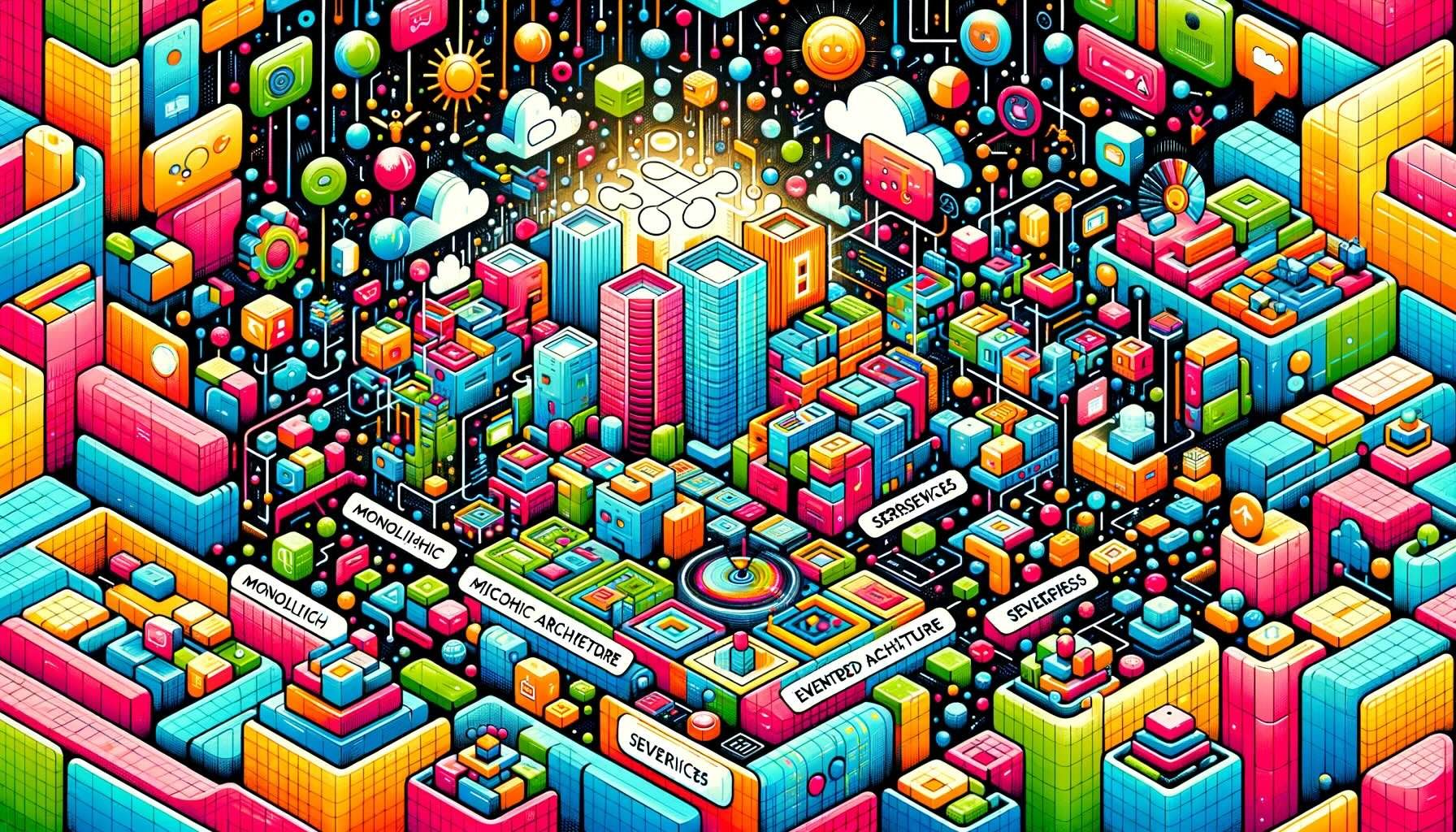Hey there! Today, I want to chat about something that's been a big part of my coding life: backend architectural patterns. If you're like me, you've probably found yourself lost in this maze more than once. So, let's break it down, shall we?
Overview Your Variants

The Monolith
When I first started coding, everything was about the monolithic approach. Think of it as a one‑size‑fits‑all solution. In a monolith, all parts of the application—user interface, database operations, server‑side logic—are bundled into a single platform. It's like having your entire wardrobe in one giant suitcase. Super convenient, right? Well, yes and no.
The good part? It's straightforward. You've got everything in one place, making it easier to develop, deploy, and debug. But as my projects got bigger, this suitcase started bursting at the seams. Changing one thing meant risking something else. It's like pulling a thread on your sweater and ending up with a mess.
Microservices
Enter microservices—the game‑changer. Imagine breaking that giant suitcase into several smaller, organized bags. Each microservice is like a mini‑application, focusing on a specific function and communicating with others through APIs.
This was a breath of fresh air! I could update parts of the app without affecting others. It felt like modular Lego pieces that I could play around with. But it wasn't all smooth sailing. Coordinating these services, especially in large systems, can be like herding cats. It requires careful planning and a solid understanding of how these services will interact.
Event‑Driven Architecture
As I delved deeper, I stumbled upon event‑driven architecture (EDA). This is all about reacting to events. In simple terms, when something happens (an event), the system responds accordingly. It's like having a bunch of dominoes; tip one, and the rest follow in a specific order.
This approach is fantastic for systems where real‑time data processing and responsiveness are key. But beware, it can get complex. Managing and tracking the flow of events can be a headache, especially when debugging.
Serverless
Lately, I've been exploring serverless architecture. Contrary to the name, there are still servers involved, but it's all about offloading the server management to cloud providers. It's like having a self‑driving car; you just tell it where to go.
Serverless is great for scalability and cost‑efficiency, as you pay per use. However, it demands a different mindset, especially in terms of design and deployment.
And More
- Service‑Oriented Architecture (SOA): A collection of services that communicate over a network, each providing specific functionality.
- Layered (N‑Tier) Architecture: Splits the application into presentation, business logic, and data storage layers.
- CQRS (Command Query Responsibility Segregation): Separates read and write models to optimize each for its respective purpose.
- Domain‑Driven Design (DDD): Aligns code structure and language with the business domain for clarity and maintainability.
- API‑First Development: Designs and implements the API before building the consuming applications.
- Hexagonal (Ports & Adapters) Architecture: Keeps core logic separate from external systems, making testing and substitution easier.
- Cloud‑Native Architecture: Embraces cloud‑provider services for resilience, scalability, and rapid change.
My Two Cents: Navigating through these architectural patterns has been quite a journey. Each has its charms and challenges. The key takeaway? There's no one‑size‑fits‑all. It's about finding what works best for your project's needs and your team's skills. Also, keep learning and experimenting. The tech world is always evolving, and what's cutting‑edge today might be outdated tomorrow. Stay curious, stay flexible, and enjoy the ride in this fascinating world of backend architecture!
Choosing the Right Backend Architecture: Tips from My Playbook

After exploring various architectural patterns, you might wonder, "How do I choose the right one for my project?" Well, here's some advice from my own experiences, a sort of playbook, if you will.
Understand Your Project Requirements
First and foremost, know what you're building. Is it a small blog or a large‑scale e‑commerce site? Different projects have different needs. A monolith could be perfect for simpler applications, while microservices might be the way to go for complex, scalable systems.
Consider Your Team's Expertise
The architecture you choose should align with your team's skills. If you've got a team experienced in microservices, leverage that expertise. But if your team is more comfortable with monolithic applications, starting with a monolith might be better.
Scalability and Maintenance
Think about the future. Will your app grow in users or functionality? Microservices and serverless architectures offer better scalability but demand more maintenance and oversight. Be realistic about your capacity to manage these aspects.
Budget and Resources
Budget is always a factor. Serverless can be cost‑effective for low‑traffic workloads, but a traditional server approach might be more economical for constant usage. Also consider the resources needed for setup and ongoing maintenance.
Performance Needs
Some architectures handle load and performance better than others. If your application requires real‑time data processing, consider event‑driven or microservices architectures. For less demanding applications, a monolith could suffice.
Experiment and Adapt
Don't be afraid to experiment. You won't know what works best until you try it out. Start small, gather feedback, and be ready to adapt. Architecture isn't set in stone—it can evolve as your project grows.
Wrapping Up
Choosing the right backend architecture is a balancing act. Consider your project's needs, your team's skills, budget constraints, and future growth. Be flexible and open to change—every decision is a learning opportunity.
